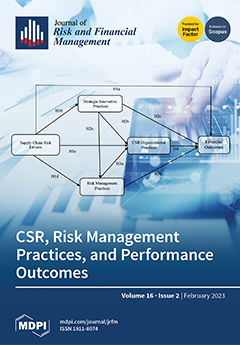Selecting stock portfolios and assessing their relative volatility risk compared to the market as a whole, market indices, or other portfolios is of great importance to professional fund managers and individual investors alike. Our research uses the cross-sectional intrinsic entropy (
CSIE)
[...] Read more.
Selecting stock portfolios and assessing their relative volatility risk compared to the market as a whole, market indices, or other portfolios is of great importance to professional fund managers and individual investors alike. Our research uses the cross-sectional intrinsic entropy (
CSIE) model to estimate the cross-sectional volatility of the stock groups that can be considered together as portfolio constituents. The
CSIE market volatility estimate is based on daily traded prices—open, high, low, and close (OHLC)—along with the daily traded volume for symbols listed on the considered market. In our study, we benchmark portfolio volatility risks against the volatility of the entire market provided by the
CSIE and the volatility of market indices computed using longitudinal data. This article introduces
CSIE-based betas to characterise the relative volatility risk of the portfolio against market indices and the market as a whole. We empirically prove that, through
CSIE-based betas, multiple sets of symbols that outperform the market indices in terms of rate of return while maintaining the same level of risk or even lower than the one exhibited by the market index can be discovered, for any given time interval. These sets of symbols can be used as constituent stock portfolios and, in connection with the perspective provided by the
CSIE volatility estimates, to hierarchically assess their relative volatility risk within the broader context of the overall volatility of the stock market.
Full article




